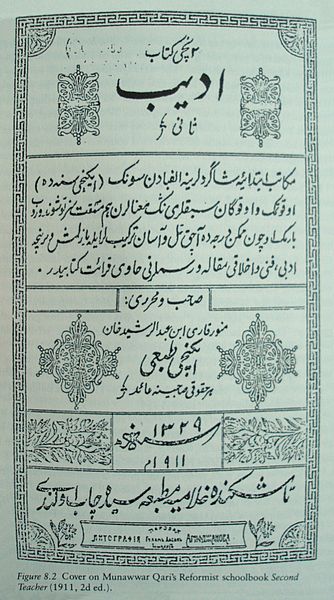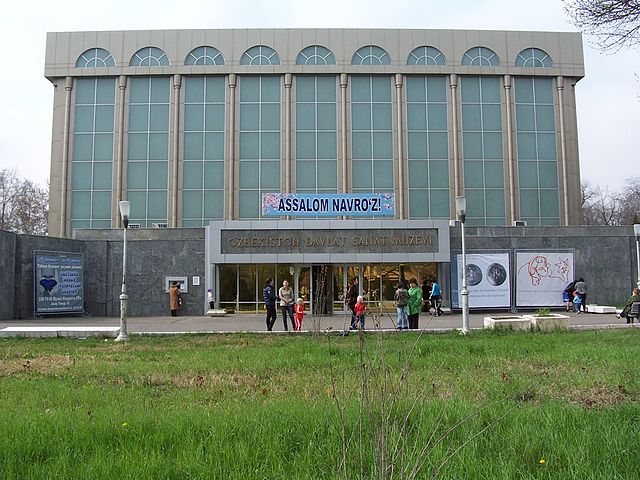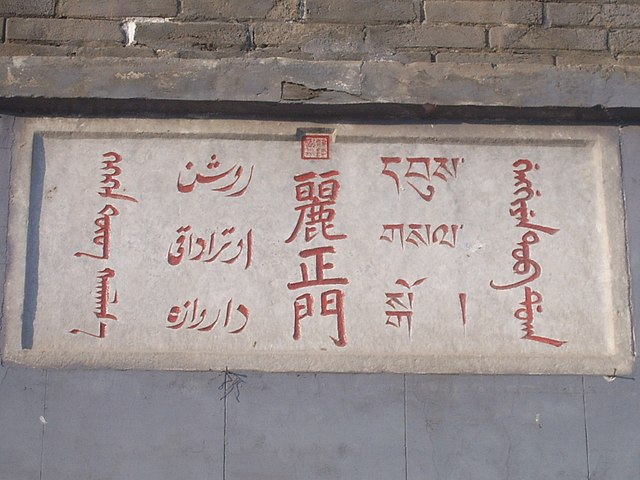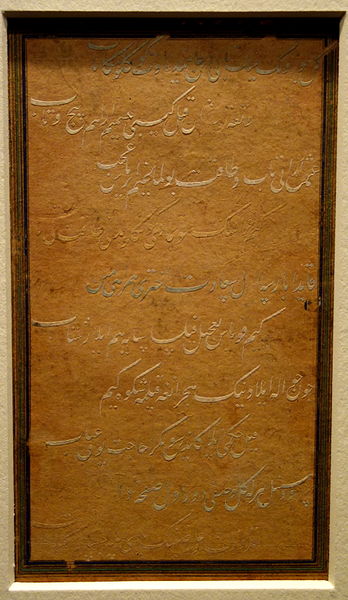The Uzbek language has been written in various scripts: Latin, Cyrillic and Arabic. The language traditionally used Arabic script, but the official Uzbek government under the Soviet Union started to use Cyrillic in 1940, which is when widespread literacy campaigns were initiated by the Soviet government across the Union. In Uzbekistan, the Latin script was officially reintroduced, along with Cyrillic, in 1992, and a full transition to Latin script is awaiting implementation. In neighboring Kyrgyzstan and Tajikistan, people use Cyrillic. In the Xinjiang region of China, some Uzbek speakers write using Cyrillic, others with an alphabet based on the Uyghur Arabic alphabet. Uzbeks of Afghanistan also write the language using Arabic script, and the Arabic Uzbek alphabet is taught at some schools in the country.
A page from an Uzbek book printed in Arabic script. Tashkent, 1911.
A Nowruz sign in front of the State Art Museum of Uzbekistan written using an ʻokina-like symbol
Chagatai, also known as Turki, Eastern Turkic, or Chagatai Turkic, is an extinct Turkic language that was once widely spoken across Central Asia. It remained the shared literary language in the region until the early 20th century. It was used across a wide geographic area including western or Russian Turkestan, eastern or Chinese Turkestan, the Crimea, the Volga region, etc. Literary Chagatai is the predecessor of the modern Karluk branch of Turkic languages, which includes Uzbek and Uyghur. Turkmen, which is not within the Karluk branch but in the Oghuz branch of Turkic languages, was nonetheless heavily influenced by Chagatai for centuries.
Lizheng Gate at the Chengde Mountain Resort. The second column from the left is the Chagatai language written in Perso-Arabic Nastaʿlīq script which reads Rawshan Otturādiqi Darwāza.
Late 15th century Chagatai Turkic text in Nastaliq script.




